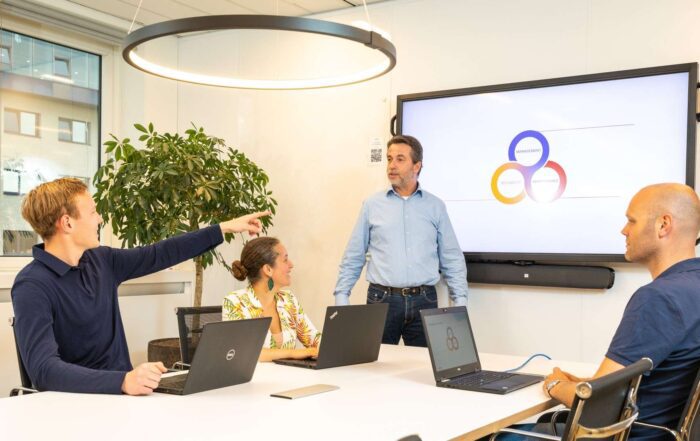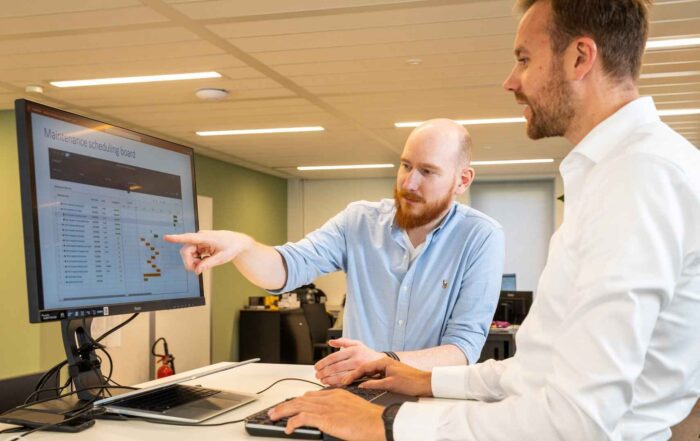Author: Erwin de Witt, Senior Consultant at MaxGrip
Where 2023 was the year of the global rise of Generative AI, in 2024 and 2025 this technology will increasingly be integrated into the workplace. How will that happen; Will Generative AI remain an optimization tool for increased productivity, like Lean or Predictive Maintenance? Or will it change the way we work to such an extent that it becomes ‘disruptive’?
Generative AI, or GenAI, is a form of artificial intelligence where updated content is generated, such as text, images, music, or other media. This often resembles human-made content and is based on user input. GenAI is capable of analyzing and utilizing unstructured data (images, text, etc.). The driving force behind Generative AI are ‘Large Language Models’ or LLMs. The quality of an LLM is determined by the number of parameters in the LLM; in GPT-3, there were 175 billion, in GPT-4 (latest version) there are 1.76 trillion. Known pitfalls include the hallucination of GenAI models, bias in training data, intellectual property issues and environmental impact.
Co-Pilot
In the first category, GenAI as an optimization tool, there are numerous examples. Here, Generative AI is used as a co-pilot, supporting functions, and acting as a ‘human’ interface between the user and data in systems. This is seen in EAM (Enterprise Asset Management) systems, Operational Technology systems and mobile technician applications. Searching for relevant data and performing analyses with the data can be done more efficiently in this way. The necessity for data-analytical skills is partially reduced. The significant potential lies not in applying GenAI to individual systems but in its application to the collection of data from various systems. The risk of hallucination becomes an issue in these applications, which can have far-reaching consequences in the industry. It is essential that this risk is minimized as much as possible.
Accepting Mistakes
If you ask a Reliability Engineer about the MTBF (Mean Time Between Failures) of a particular component, they will be able to give an answer. If you want to know this answer more precisely, you ask for the justification of that answer or indicate which analyses you want to see. Depending on the risk, you are quickly satisfied. With a GenAI application, it works the same way. The quality of answers depends on the quality of asking questions and giving commands (prompting). This is a new skill that users must learn. Accepting that mistakes are made is the other part of the solution. While this is obvious to people, we find it less logical with a computer. However, if an LLM solution makes the same or fewer mistakes than the current way of working, this should not be a problem.
Disruptive
The second category of Generative AI applications is harder to predict, but also potentially has the greatest impact. These are the applications where work changes radically and functions or entire sectors become obsolete. In other sectors, Generative AI has already had a greater impact on the way of working, for example, in marketing and software development. However, the applications we encounter in the asset management domain are still limited. One way to look at this is through the lens of the development of GenAI applications, which can be divided into four levels. The higher the level, the higher the quality of the output, but also the greater the investment (time, complexity, training data, computing power). The first level concerns prompt engineering. This involves giving instructions to GenAI to the best of your ability. An example is the GPTs that can be developed since ChatGPT4.0. The technology can be taught to use a methodical inquiry, such as an RCA or FMECA (Failure Mode Effects Criticality Analysis). As mentioned earlier, the second level is the integration of Generative AI into existing applications. The third level is finetuning existing LLMs in which an existing model is fed additional training data. For our sector, the expectation is that the most disruptive technologies will emerge from this. The last level is building a complete LLM. Keeping in mind the required investment, we see primarily larger technology companies such as Microsoft, Meta and Google that are able to do this.
Future FMECAs
Looking ahead, LLMs could be trained with substantial amounts of data from FMECAs to then generate this analysis. The same applies to work instructions, maintenance plans, etc. The expectation is that the amount of data for further training of the models is considerable. A good and safe way to unlock the data (anonymously) is desirable. Data is still of significant importance. Another disruptive application could lie in the ease with which Gen AI generates code. This could be building a Power Bi Dashboard or adjustments in the EAM system. The dependence on expertise in this area is thus greatly reduced.
Sound Strategy
Both approaches lead to the implementation of innovative technology. It is important to consider both the system side and the human side. The system side requires a clear strategy regarding the development of the technology. There is a risk of starting ten pilots that all go in different directions without considering the bigger questions. Should I build a system myself? Do I use ready-made software products? How do we handle data? Do we use partners?
Change Process
Let’s not forget the importance of enabling people to work with technology. Like other digital technologies, implementation is a ‘must-do’; merely making it available is not sufficient to utilize its potential. This requires a change process to learn the right skills to use and further develop the technology. This is also where things often go wrong: limited implementation fails to realize the technology’s potential; adoption of innovative technology is essential. And it should be clear by now: Generative AI has enormous potential.
Get inspired
More and more, we see companies acknowledge the crucial role that people play in getting successes by implementing Industry 4.0 solutions.
Unlock the full potential of your EAM system by transitioning from implementation to deployment, fostering operational excellence and strategic success.
By incorporating multiple strategies and focusing on only the assets most critical for system or business objectives, RCM minimizes life-cycle costs while maintaining production output.




